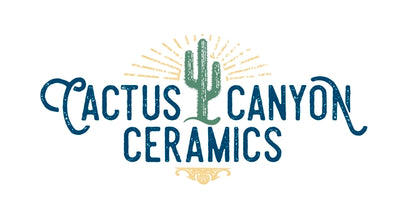Botijos, pronounced …bo- TEE-hoes …. are Spanish, earthenware water jugs. For centuries, the Spanish botijos provided cool drinking water even during the hottest days (still do in fact). The shape of the botijo along with the porous clay used to make it, allow the jug to “sweat” and through evaporation, the water inside is cooled. For more information about botijos and other jugs that naturally cool water, check out the No Tech Magazine article here.

Back before refrigeration, botijos were in huge demand in Spain. With temperatures reaching 100+ on a regular basis during spring, summer and fall, the botijo could be found at each work station in a factory and at every work site. The production of the botijos was a big business for decades; especially the decades during which there was little refrigeration available, and yet still there was mechanized transport which allowed wide spread trade. One of the principal sources of “mass produced” botijos was a small village near Cordoba called La Rambla, where the soils were perfect for the botijo.
The botijo became a topic of conversation just recently, when I sat down to interview Ani for the the “Meet the Artisans” page at the Cactus Canyon Ceramics webstore. Ani is an incredibly talented painter. I love to watch her paint and she is always so up beat and happy that she is a joy to visit. Ani is the mother of 4 grown children, and she is the very proud and happy grandmother of three beautiful grandchildren.

Ani was born into a potter family when the botijo market was at its peak. Ani and her two sisters worked exclusively in potting and decorating pots from their earliest years. Work to precedence over everything else, even school. The production of botijos was incredibly labor intensive. Ani explained the process to me and while I didn’t take extensive notes, I can give a general idea of how the botijos were made.
The process involved bringing buckets of clay/earth into a work shop and dumping them on the floor. There was always a certain amount of sorting of things that should not be in the clays (such as rocks) and usually, there were large, hard clumps of clay which had to be busted up with a hammer. Then water was was added to the clays which was absorbed very rapidly. Water was added until the clay felt consistent, and firm and then the the clays were piled up high. The final step in the preparation of the clay was for Ani, her sisters and parents to stomp the clay with their bare feet, which was the most efficient method for mixing the clays well.

Ani’s Dad was a potter so of course he made the pots. The clays in La Rambla were white and porous – perfect for botijos and other pots such as the botijo con cuerda (with a strap), huchas, jarras, jarros y donillos for gazpacho. Ani and her sisters started decorating pots at a very young age (7, 8 & 9 years old). They started with designs made with their fingers and thumbs, but as Ani and her sisters grew older and more experienced (around 14 years old), they sewed triangular “manguillas” with tips to apply liquid clay. The manguillas were very similar to a pastry bag used for decorating cakes with frosting. Manguillas are no longer used and instead the painters us a “perra”, which is a rubber bulb shaped device with a tip.
Some of the first slip trailing designs that Ani did was white on white. Basically, using the same white clay for decorating as was used to make the pot. The white on white provided a surface relief and textures. Colors were not in wide use until a decade later.

Of course, the old kilns were wood fired, usually the trimming from olive orchards were used to fire the kilns. Ani told me that another of the fire materials they used was the pulp from the olive oil mills – the pulp that remained after the olive oil was extracted. Ani said it burned very well for firing pots, and that even after, they could reconstitute it with a little bit of water, and burn it again in braseros used to keep the painters warm during the winter months. Ani said in those times, everything was used. Nothing was thrown away.
Many families made pots. The decorating or the actual physical positioning of the handles, etc are what differentiate each families products from others. All the families respected each others space and creativity, and no one copies others.
Sometimes I find old photos on the walls of bars and restaurants. I have seen photos of the clay preparation with the feet and potters at work, but one of my favorite photos is of an old dual wheeled truck with a rack on the box on back. The truck looks like a haystack, but if you look closely, you can see botijos sticking out of the straw like eggs! Since this was before cardboard and other packing materials were widely used, the best solution was to pack the pots in straw and head to market! Kind of like the Clampets of Beverly Hills!
It was enjoyable to visit with Ani, and to learn a little more about the history of potting in Andalusia.
Don’t be afraid to leave a comment below. I love talking about Spain and I love talking about pottery.


